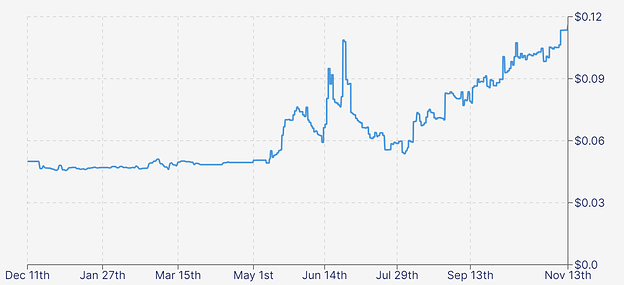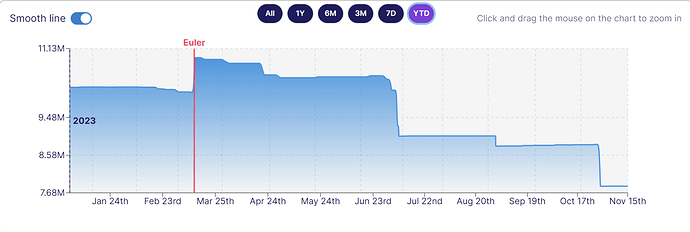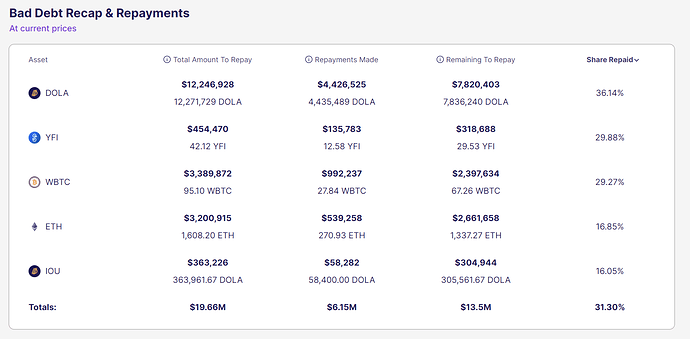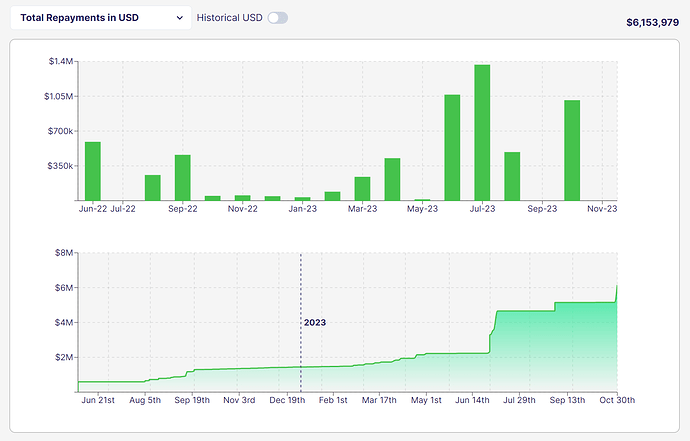Proposal to add the TriDBR pool to the Gauge Controller
Summary:
Proposal to add TriDBR pool to the Curve Gauge Controller.
Pool deployed here.
Gauge deployed here.
References/Useful links:
Link to:
- Website: https://www.inverse.finance
- Documentation ABOUT INVERSE - Inverse Finance
- Transparency: Inverse Finance - Transparency Overview
- Github Page: Inverse Finance · GitHub
- Communities: Inverse.finance
- Defillama: Inverse Finance Page
Protocol Description:
Inverse Finance is an on-chain decentralized autonomous organization that develops and manages a suite of permissionless and decentralized financial products using blockchain smart contract technology. Originally founded by Nour Haridy in late 2020, the protocol is now governed by Inverse Finance DAO, a collective of crypto enthusiasts. Our code base is open source and maintained by the community.
Inverse Finance’s main products are:
- FiRM, a fixed-rate lending market
- DOLA, a stablecoin pegged to the US Dollar
- DBR, a new DeFi primitive that enables holders to service a DOLA loan on FiRM.
DBR is the DOLA Borrowing Rights token; holding it in your wallet gives you the right to borrow the DOLA stablecoin in FiRM. One DBR gives the right to borrow one DOLA for one year (or 2 DOLA for 6 months etc). This is assuming you have deposited enough collateral. DBR can be thought of as tokenized interest for FiRM; on FiRM’s UI, there is an optional feature to auto-buy DBR when opening a loan, and auto-sell DBR when closing a loan, which is linked directly to the TriDBR pool on Curve.
To learn more about DBR, please see:
Motivation:
This proposal aims to add the TriDBR pool to the Curve Gauge Controller, a pool made up of DBR, INV and DOLA; the 3 native tokens of Inverse Finance DAO. By including this pool in the Curve ecosystem, we aim to deepen liquidity, increase trading volume, and provide a more efficient trading experience for DBR users, improving the user experience on FiRM. The current depth of TriDBR causes significant slippage when looking to purchase large quantities of DBR, which makes opening a large, long-term debt position on FiRM less attractive; deeper liquidity will improve this experience.
Specifications:
You can view analytics for DOLA on Defillama. To learn more about the protocol, please visit our official docs, governance and our transparency pages.
Governance: Provide current information on the protocol’s governance structure. Provide links to any admin and/or multisig addresses, and describe the powers afforded to these addresses. If there are plans to change the governance system in the future, please explain.
Decisions for the DAO are made by using INV in the Governor Mills voting contract but as it takes a minimum of five days to vote through a proposal, Inverse Finance DAO has delegated decision-making power to several working groups with limited autonomy and budget. The scope of these working groups is determined in their proposals and they exist to meet fast moving market conditions, to transfer specific or minor decisions to relieve token voters from information overload, and to create a reliable and enjoyable work environment.
Working groups are held accountable to DAO governance, are required to produce progress reports and periodically apply for budget renewals. Delegates have insight into all discord conversations and working groups can be altered or disbanded by a DAO vote.
A detailed description of our governance can be found here. Equally, check out our transparency portal here which gives a visual representation of Inverse Finance Governance.
Oracles: Does the protocol rely on external oracles? If so, provide details about the oracles and their implementation in the protocol.
The Fixed Rate Market or “FiRM,” is Inverse Finance’s Fixed Rate Market lending protocol. FiRM makes use of Chainlink price oracles or Curve’s ema, depending on the market, in combination with our native Pessimistic Price Oracle (PPO). This novel approach to price oracles for borrows and liquidations in FiRM uses the lower of two recorded prices: either a) the current collateral price on the oracle feed, or b) the 48-hour low price as observed by the PPO on the oracle feed, divided by the collateral factor. For example, if the current Chainlink price for wETH is $1,500, the 48-hour low was $1,000 and the collateral factor is 80%, the PPO returns $1,250. ($1,000 / .80 = $1,250).
Note: for some assets without a Chainlink price feed (such as cvxCRV, cvxFXS, INV), Curve’s EMA oracle (found in ng pools) is used instead.
Audits: Provide links to audit reports and any relevant details about security practices.
Inverse Finance has undergone multiple audits in recent months, including the likes of Nomoi, Peckshield and DeFiMoon. Inverse has also hosted a bug bounty contest on Code4rena to conduct a comprehensive audit of FiRM, and has an active bug bounty program live on Hats Finance. All relevant audit information can be found here. The DAO also has dedicated members overseeing risk, what we call the Risk Working Group.
Centralization vectors: Is there any component of the protocol that has centralization vectors? E.g. if only 1 dev manages the project, that is a centralized vector. If price oracles need to be updated by a bot, that is a centralized vector. If liquidations are done by the protocol, that is also a centralization vector.
Within the DAO working groups have been formed to deliver work in specific areas. Often, these working groups will have a Multisig wallet that the DAO governance awards certain roles and limited treasury asset allowances in order to carry out required work. All granted privileges and allowances can be reclaimed/disabled by INV token controlled governance. These are:
- Treasury Working Group (TWG): 3 of 4 Multisig with allowances giving access to Treasury funds to optimize treasury management.
- Risk Working Group (RWG): 1 of 3 Multisig with privileges to pause actions in our (now disabled) lending market.
- Policy Committee (PC): 5 of 9 Multisig that can change staking reward rate to INV stakers.
- Fed Chair: 2 of 7 Multisig that can call the expansion and contraction functions (to mint/burn DOLA) on the Fed Contracts.
Please see our Multisig Wallet section of the transparency portal here.
Market History: Has the asset observed severe volatility? In the case of stablecoins, has it depegged? In the case of an unpegged asset, have there been extreme price change events in the past? Provide specific information about the Curve pool: how long has it been active, TVL, historical volume?
DBR’s price moves up and down with the demand to borrow DOLA on FiRM, relative to the demand to hold DOLA.
This graph shows the price of DBR since the launch of FiRM:
TriDBR currently has a TVL of ~$956k, and has seen a relatively high level of volume since migration from DBR/DOLA pool on October 1st.



